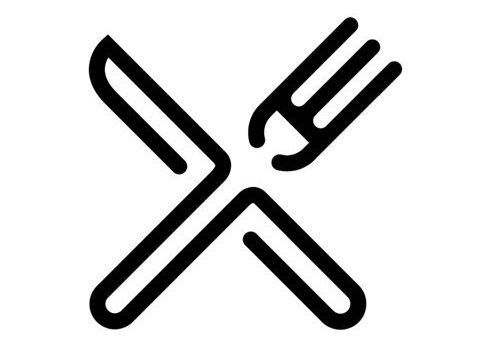For many of my gentile followers, Christmas day meals might evoke memories of turkey, or ham, or something. I’m not entirely sure. But for me and my Jewish comrades, Christmas Day means absurd amounts of Chinese food followed by a movie. Last year, I was fortunate enough to be in Taipei at the original Din Tai Fung for Christmas, but this year is an entirely different story, obviously.
Due to a deadly global pandemic, there will be no Chinese restaurants or movie theaters, or Christmas for Jews. As such, I decreed that we prepare a Chinese feast of our own before we binge watch The Crown on Netflix. After much debate and deliberation, we settled on potstickers and moo shu pork. However, it does beg the question: Why do American Jews historically eat Chinese food on Christmas Day? It’s a tradition that stretches back as long as anyone can remember, far as I knew. The answer, dear readers, takes us back to New York City at the turn of the 20th century.

Let’s consult a quick map of Manhattan neighborhoods.
As you can see, the Lower East Side (a traditionally Jewish neighborhood) borders Chinatown. As such, it makes sense that there was lot of intermingling between New York Jews and Chinese-Americans. But the story runs deeper than that.
For one thing, there was little to no antisemitism in Chinese communities. After all, there were no Jews in China. This was in sharp contrast to the other ethnic groups in the area: Italians and Germans, both with long histories of antisemitism. Some Italian and German restaurants refused to serve Jews. The lack of animosity towards Jews from Chinese-Americans encouraged Jews to eat their food. Furthermore, due to the scarcity of dairy in Chinese cuisine, most of it was already kosher. Lastly, Chinese restaurants were usually open on Christmas because they weren’t Christian. All of these factors contributed to the creation of this uniquely American tradition. Today, Chinese food is still as popular as ever amongst American Jews. There are kosher Chinese restaurants all across the country.
Enough history. Let’s get to cooking. First, we make the potstickers that we’ve made time and time again.
To go with our potstickers, we’re also making a staple of Chinese-American cuisine and a Jewish favorite: moo shu pork. Yes, it’s pork and not kosher, but because it’s cut into small pieces, kosher people sometimes ignore kashrut. Don’t believe me? Read this quote from an article written by Gaye Tuchman and Harry G. Levine, sociologists from Brandeis University:
At first glance, Chinese food also seems an unlikely choice for Eastern European
Jews: Chinese cooking does incorporate pork, shrimp, lobster, and other forbidden
items. Nonetheless, because of several distinctive characteristics of Chinese cuisine,
Chinese food was actually unusually well suited for use by New York Jews seeking to
demonstrate independence from the orthodoxies of traditional Eastern European
Judaism. Chinese food was safe treyf.
As people we spoke with were quick to point out, Chinese cooking disguises the
tabooed ingredients by cutting, chopping, and mincing them. Ancient Chinese texts refer
to cooking itself as ko p’eng — ‘to cut and cook.” Chinese food could be adopted by
rebellious Jews because the forbidden substances were so disguised that dishes did
not reflexively repulse and so undermine their ability to rebel.
Many of the Jews we interviewed appreciated this disguise. Several reported
what was certainly a very common experience. They loved to eat egg rolls in Chinese
restaurants because the pork and seafood tasted delicious, but were so minced that
they could pretend these ingredients were not there. One middle-aged man said that
when he thought he had pork in his mouth he instantly got a headache, but when he
swallowed it the headache just as quickly disappeared. A woman in her forties recalled
dining regularly as a child with her sister, mother, and grandmother: the girls ate spare
ribs and sweet and sour pork, mother did not eat pork, and grandma pretended not to
know treyf was on the table. One woman even reported that in the 1950s her aunt had
three sets of dishes: one set for dairy meals, another for meat meals (as is traditional in
kosher homes), and paper plates and plastic cutlery exclusively for take-out Chinese
food.
Tuchman, Gaye, and Harry G. Levine. “‘Safe Treyf’ New York Jews and Chinese Food.” Contemporary Ethnography, 1992, web.archive.org/web/20130319114829/dragon.soc.qc.cuny.edu/Staff/levine/SAFE-TREYF.pdf.
Anyway, the recipes we loosely consulted called for some interesting ingredients, including dried lily flower.
I tried to make the moo shu wrappers using Dave Chang’s recipe, but they came out hilariously small and too thick – maybe it’s the rolling pin. (I’m confident I’ll do it properly next time.)
Armed with a variety of dipping sauces for our potstickers (including ponzu and Din Tai Fung’s recommended blend of 3 parts Chinese black vinegar to 1 part soy sauce) we sat down at the table to eat. It was good, but considering how much effort we put in to cooking, getting takeout from Taste of Szechuan might have been the better move. But we were home all day – what else were we going to do?










It was so fun and pretty yummy but yeah maybe it was the rolling pin…
LikeLiked by 1 person
Thanks for the sociology lesson.
LikeLiked by 1 person
Interesting history!
LikeLiked by 2 people
Nice work. I took Chinese cooking classes in high school w Mike Horwitz. I learned best to buy the moo shu wrappers. One day we’ll make a Chinese feast for the cohen – greens.
LikeLiked by 2 people
I’ll be waiting for that Chinese feast prepared by Matt and Zev. The one back in Matt’s high school days left the kitchen destroyed and Mike and Matt nowhere in sight.
LikeLiked by 2 people
Zev: Food looks great. We used to go to the Kosher Comedy Night at Chinese restaurant in S.F. ,on Xmas eve.
Poppaganda
LikeLiked by 1 person